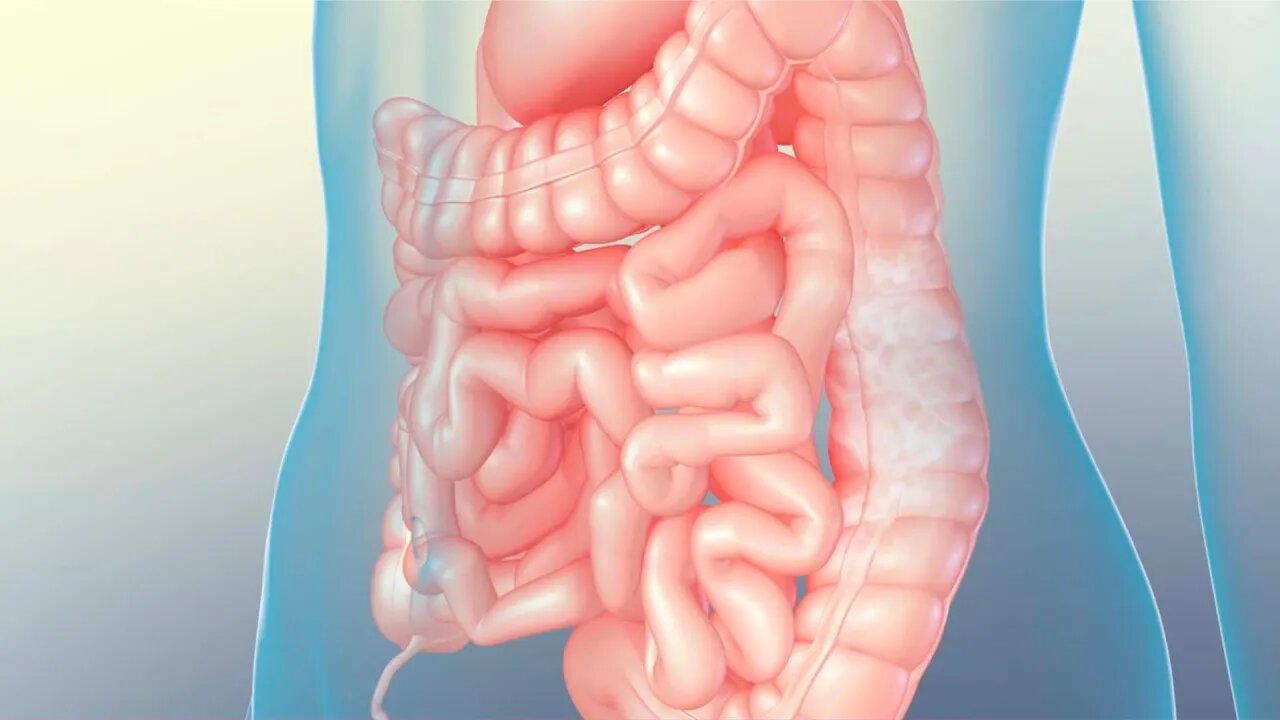Premium Only Content

Understanding Lactose Intolerance
MEDICAL ANIMATION TRANSCRIPT: The digestive system consists of specialized organs and glands that process food and supply nutrients to body cells. The digestive organs form a continuous tube called the gastrointestinal tract. In normal digestion, swallowed food moves down the esophagus and into the stomach, where the food is broken down into smaller particles. From the stomach, these particles enter the small intestine, where enzymes from the pancreas, liver, and the intestinal lining breakdown the particles into nutrient molecules. Along the lining of the small intestine, cellular projections called microvilli absorb the nutrients as well as water, sugars, and fats. Unabsorbed food particles move into the large intestine which absorbs more water and salts. The remaining material enters the rectum, where it will stored until it exits the body as solid waste called feces. Lactose intolerance is an example of abnormal digestion. Lactose is the major carbohydrate in milk and milk products. Normally, ingestion of lactose stimulates cells lining the small intestine to secrete a digestive enzyme called lactase. Lactase divides the lactose into simple sugar molecules which are easily absorbed. In lactose intolerance, lactase is either absent or insufficient. After ingestion of food containing lactose, no lactase is available to break it down. As a result, lactose accumulates in the small intestine which disrupts normal water absorption, causing water retention. The unabsorbed water and undigested lactose enter the large intestine, where bacteria metabolize the lactose. This process generates gas that fills the large intestine, causing abdominal pain and flatulence. In addition, lactose in the large intestine causes water retention, producing watery feces known as diarrhea. While there is no cure for lactose intolerance, treatments include taking lactase tablets before eating foods containing lactose, using lactase enzyme drops in milk, and drinking lactose-free milk.
#LactoseIntolerance #lactase #FoodSensitivity
ANM11047
-
 LIVE
LIVE
Candace Show Podcast
2 hours agoBecoming Brigitte: An Inaccessible Past | Ep 2
7,399 watching -
 LIVE
LIVE
Right Side Broadcasting Network
5 hours agoLIVE: President Trump Signs EOs; Pete Hegseth Meets with Netanyahu - 2/5/25
9,913 watching -
 LIVE
LIVE
Dr. Drew
3 hours agoPsychics Investigate DC Black Hawk & Philadelphia Medical Plane Crashes w/ Zach Vorhies + Eddie Conner & Andrew Anderson – Calling Out w/ Susan Pinsky – Ep 166
1,058 watching -
 DVR
DVR
In The Litter Box w/ Jewels & Catturd
19 hours agoDemocrats Come Unglued | In the Litter Box w/ Jewels and Catturd Ep. 735 - 2/5/2025
17.3K16 -
 1:44:25
1:44:25
The Quartering
3 hours agoTrump Impeachment, Democrat Insurrection, Massive Scandal At Politico & DC Crash Update!
48.7K33 -
 LIVE
LIVE
Dr Disrespect
5 hours ago🔴LIVE - DR DISRESPECT - KINGDOM COME: DELIVERANCE 2 - FIRST IMPRESSION
3,652 watching -
 37:54
37:54
CryptoWendyO
2 hours ago $0.03 earnedBEST DAY IN CRYPTO HISTORY
301 -
 LIVE
LIVE
Film Threat
7 hours agoVERSUS: FANTASTIC FOUR + CAPTAIN AMERICA + QUENTIN TARANTINO'S EPIC RANT | Film Threat Versus
72 watching -
 9:06
9:06
CryptoWrld
11 hours ago $0.82 earnedHow Nonprofits Use Blockchain Tech
8.87K2 -
 16:38
16:38
SLS - Street League Skateboarding
14 days agoRayssa Leal's Most Clutch SLS Wins Ever! 🥶🏆
73.8K4